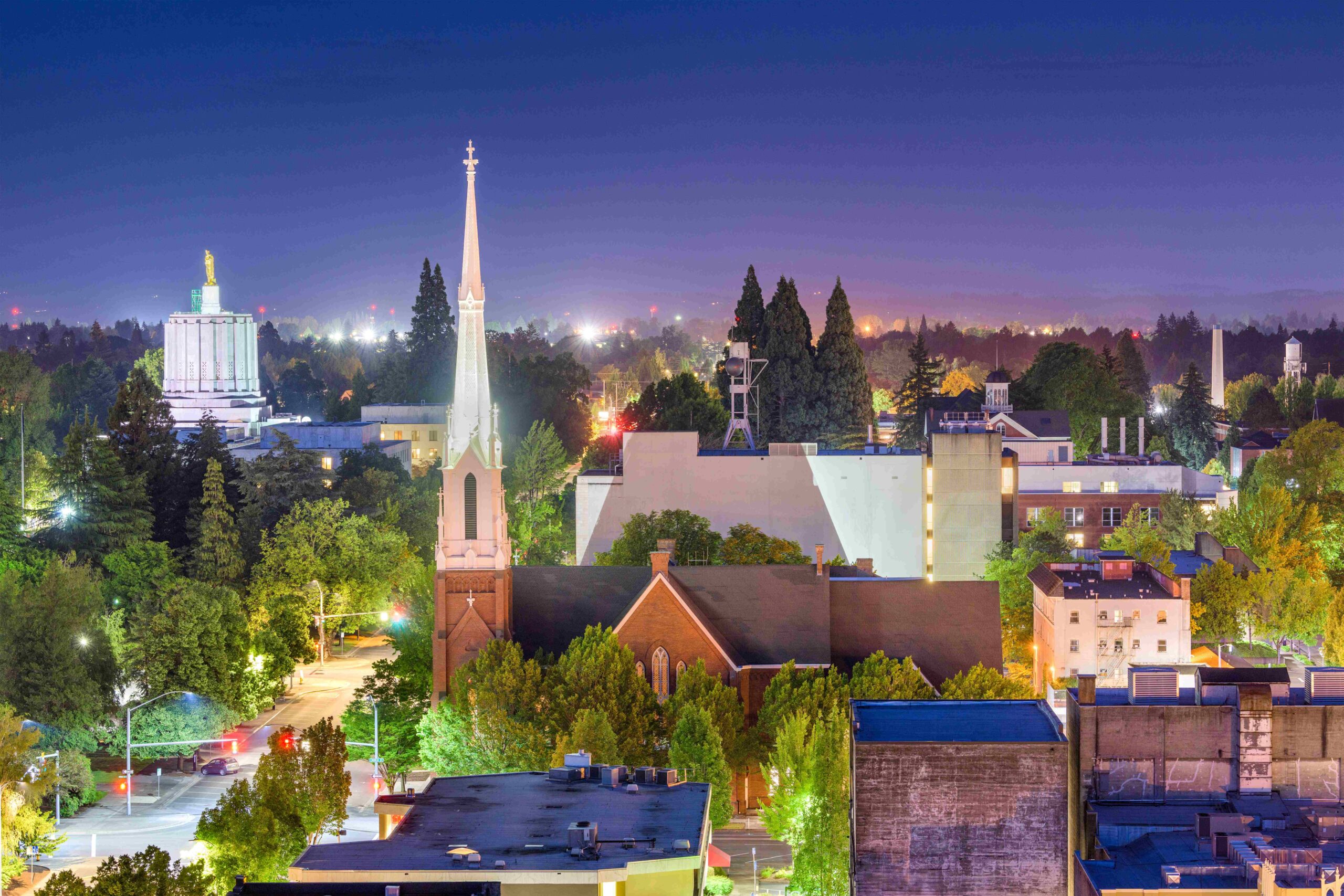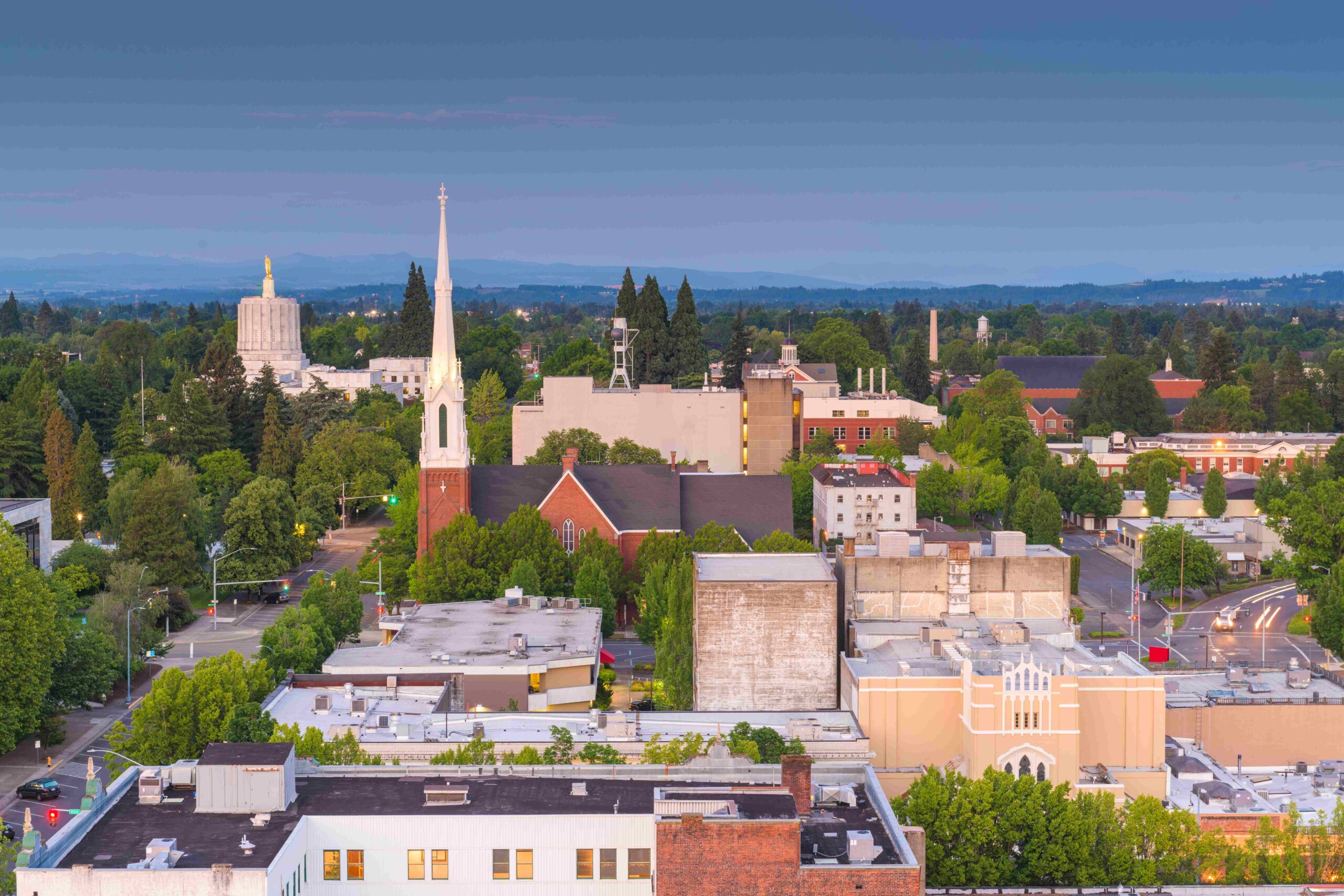On a map of Oregon, it may seem like a dot between Salem and the coastal forests. But turn off the highway and you’ll discover a different rhythm: unhurried, friendly, with houses nestled in greenery and people who greet each other by name. This is Dallas, the administrative center of Polk County, one of those towns where history still has a voice.
Town with History and Character
Dallas’ roots date back to the 1840s, when the first settlers arrived. At that time, the city was called Sintiana, after the hometown of one of its first residents. Later, when it was vying for the title of county seat, residents raised money to build a railroad and won the title from neighboring Independence.
To sound more “respectable,” the city was renamed Dallas in honor of George Dallas, Vice President of the United States under James Polk, after whom the county is named.
Today, the historic Polk County Courthouse still stands in the city center, an imposing building with columns, against which the Summerfest parade passes and the Christmas tree is lit. Nearby are the city hall, cozy cafes, and shops in late 19th-century houses. These streets remember the local railroad ambitions, the heyday of the timber industry in the early 20th century, and the collapse of factories in the early 21st century.
Where People Live
Today, Dallas is home to about 17,000 people. It is not a village, but it is not a noisy suburb either: it is more of a community town where everything is within easy reach, from schools to wineries.
There are no skyscrapers, but there is an indoor water park, favorite family cafes, farmers’ markets, and a strong tradition of neighborly support. Dallas is actively developing as a magnet for small businesses and local tourism thanks to its natural surroundings, proximity to Salem, and a lingering sense of “belonging.”
Dallas is located on the Rikreal Creek, west of the Willamette Valley. It is surrounded by fields, hills, and vineyards that stretch to the horizon, which are especially beautiful in spring and early fall.
Lovers of green spaces will not be bored here. The city park covers more than 35 acres, with an arboretum nearby where you can stroll under the canopy of rare trees. Nearby are the Black Rock trails, Baskett Slough Nature Preserve, trails along creeks, and, of course, parks with playgrounds, picnic areas, and dog parks.
Summers in Dallas are warm and dry, while winters are mild and rainy. It is the perfect climate for walking, gardening, and viticulture. Snowfall is rare, but when it does occur, it is almost an event.
Local Traditions
The city lives according to its own calendar. In spring and summer, there are festivals such as Bounty Market, Krazy Dayz, and music evenings in the central square. Autumn is harvest season, with walks through wineries and mushroom hunting in the woods. In winter, the streets are lit up with lights, there is a parade, and children search for hidden gnomes.
This is not a show for tourists, but real life that visitors can experience firsthand. Because in Dallas, every holiday is first and foremost an occasion to get together.
Dallas has given Oregon and the country many famous names. Among them are Mark Hatfield, governor and US senator; Johnny Ray, singer of the 1950s; Jerry Ellsworth, self-taught engineer and inventor in the field of microchips; and Jordan Poyer, professional NFL player.
Each of them is proof that you can leave a small town and still be part of the world.
Infrastructure and Daily Life
The city has a hospital, schools, libraries, churches, and small manufacturing companies. The main transportation artery is Route 223, which connects Dallas with Salem and other towns in the valley. Radio station KWIP and newspaper Itemizer-Observer still keep the local community informed.
The low density of development allows residents to live in houses with gardens rather than apartments. At the same time, the city center is only five minutes away, the nearest wineries are ten minutes away, and a nature reserve is a quarter of an hour away.
Why You Should Visit?
Because this is where real Oregon life happens. Not the kind you see in tourist brochures, but the kind that consists of conversations over fences, the smell of coffee in the morning shop, and the constant murmur of streams.
Because Dallas is not busy, but it is energetic. There is no big-city noise, but there is movement. Here, it’s easy to breathe, focus, and feel the rhythm of the earth. And you can truly learn what it means to be part of a community.
Welcome to Dallas. A city where history lives in the present, and the present is always open to the future.
